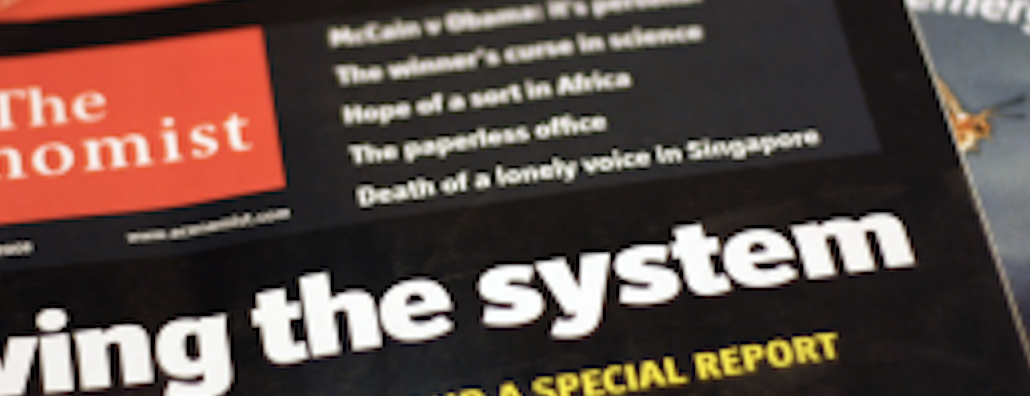
The Economist is adding another platform to its social channel distribution: it has begun rolling out stories to Japanese messaging app Line.
While Facebook serves up content relevant to each user, and Twitter Moments is more breaking-news driven, Line will prioritize more visually compelling and evergreen content. It will post cartoons, quotes and arresting photos, as well as use the push notifications feature to publish breaking news pieces, explainers, promoting features like its print front cover every Thursday, or a piece from its daily digest app Espresso. In the future The Economist wants to introduce live Q&As with its journalists.
The Economist is not the first publisher on Line. Both the BBC and The Wall Street Journal have set up shop on the messaging app. Line, which was created in Japan and spread to other Asian markets, boasts 212 million monthly users.
The Economist plans to post between four and six pieces of content a day on the homepage, compared to 25 a day that goes to Facebook, and two pieces a week in the push notification channel.
“Line offers an interesting audience that we don’t have access to,” explained Denise Law, deputy community editor at the Economist. “There’s a universe of younger readers particularly in Asia and the U.S. that wouldn’t know to go to Economist.com, so we go to them.”
The content is in English and can be accessed from U.S., Canada, Turkey, Saudi Arabia, Myanmar, Korea, Hong Kong, UK, Cambodia, and Pakistan. Users need to follow The Economist. The publication will promote its account through its various social channels. It currently has 6.3 million likes on Facebook and 12.5 million followers on Twitter.
The Economist has gotten serious about distributing content on platforms in the past year. In July last year, the board decided to invest more heavily on social platforms, which included expanding its social media team. There are currently 10 people across editorial focused on content distribution on social platforms. The Economist was in the second batch of publishers signed up to Facebook Instant Articles in December, and is expected to go live in the next month. The publisher claims that now between a quarter and a third of its site traffic comes from social. There’s no hard and fast rule about whether the team repurposes a piece that was behind the paywall or not, but readers will face messages asking them to sign up if it is.
Publishers are exploring other messaging apps, Bild recently pushed out celebrity and sports updates through Facebook Messenger, the Guardian has been experimenting with WhatsApp. Success is hard to gauge because measuring engagement is a bane.
“There’s no publisher that has nailed dark social,” said Law. “We can add short links and tags to see whether they drive traffic. But this is very much a brand play, I am not too concerned about traffic. I want to build our reach rather than drive subscribers.”
While it’s brand building for now, establishing itself is a smart move for the future to deliver more than subscribers. “There’s a huge capacity for messaging apps to deliver business results,” said Tom Ollerton, marketing and innovation director at agency We Are Social. “They are complex digital ecosystems, you can buy a mortgage on WeChat and browse the Web from in the app. Once you can do that, what do you even need the Internet for?”
More in Media

YouTube is under fire again, this time over child protection
Adalytics Research asks, ‘Are YouTube advertisers inadvertently harvesting data from millions of children?’

Media Briefing: Publishers pump up per-subscriber revenue amid ad revenue declines
Publishers’ Q2 earnings reveal digital advertising is still in a tight spot, but digital subscriptions are picking up steam.

Lessons for AI from the ad-tech era: ‘We’re living in a memory-less world’
Experts reflect how the failures of social media and online advertising can help the industry improve the next era of innovation.
Ad position: web_bfu